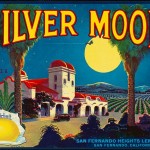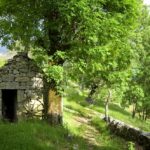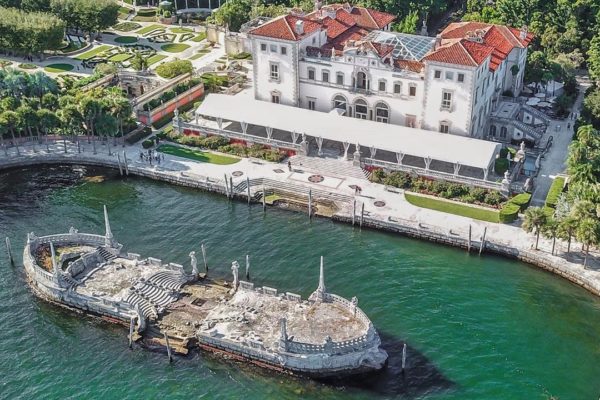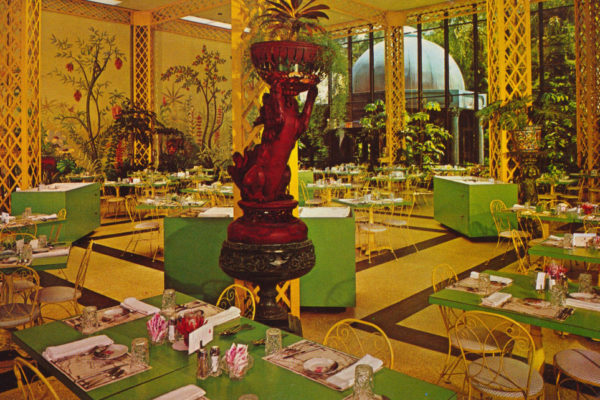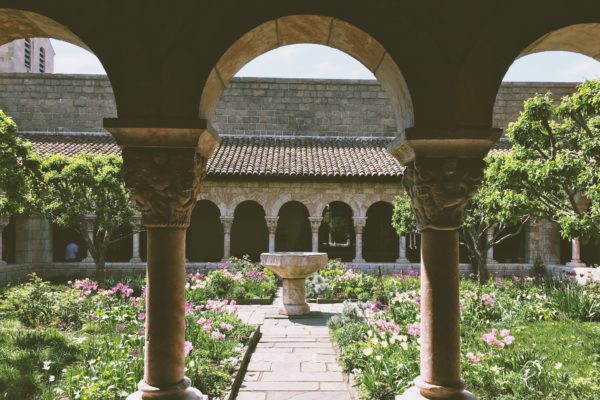
The dynasty of the lemon has fallen from the aristocratic tree and now occupies the common ground of contemporary cuisine. Lost to us are its exotic cousins, the strange fruits of all sizes, colours and shapes with the family name Citron, not lemon. Together with olives and garlic the now humbled lemon is perhaps the most universal (dare we say ‘common’) cooking ingredient in our larders today. How this noble fruit has nosedived, once adorning the finest Florentine palaces, now scattered across supermarket shelves?
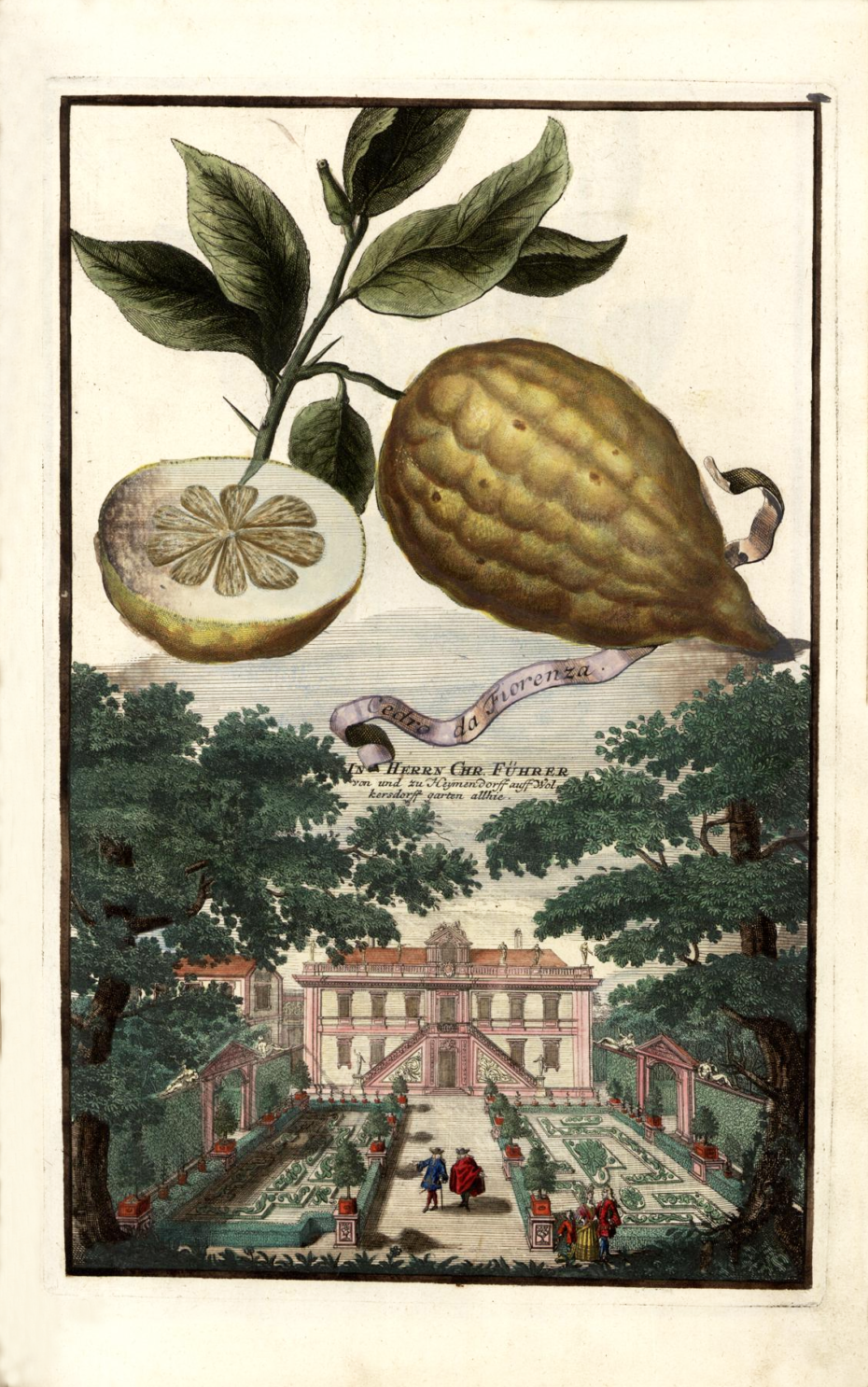
The ordinary lemon as we know it today is not what the all-powerful of the 16th century coveted – this ‘cousin’, they would regard as a degenerate descendant. The mother fruit was the citron (Citrus Medica), bigger than a fistful, often asymmetrical, rough and thick-rinded, an ancestor to most citrus fruits. Either by natural or cultivated means lemons are the ancient hybrids of bitter oranges and citrons.
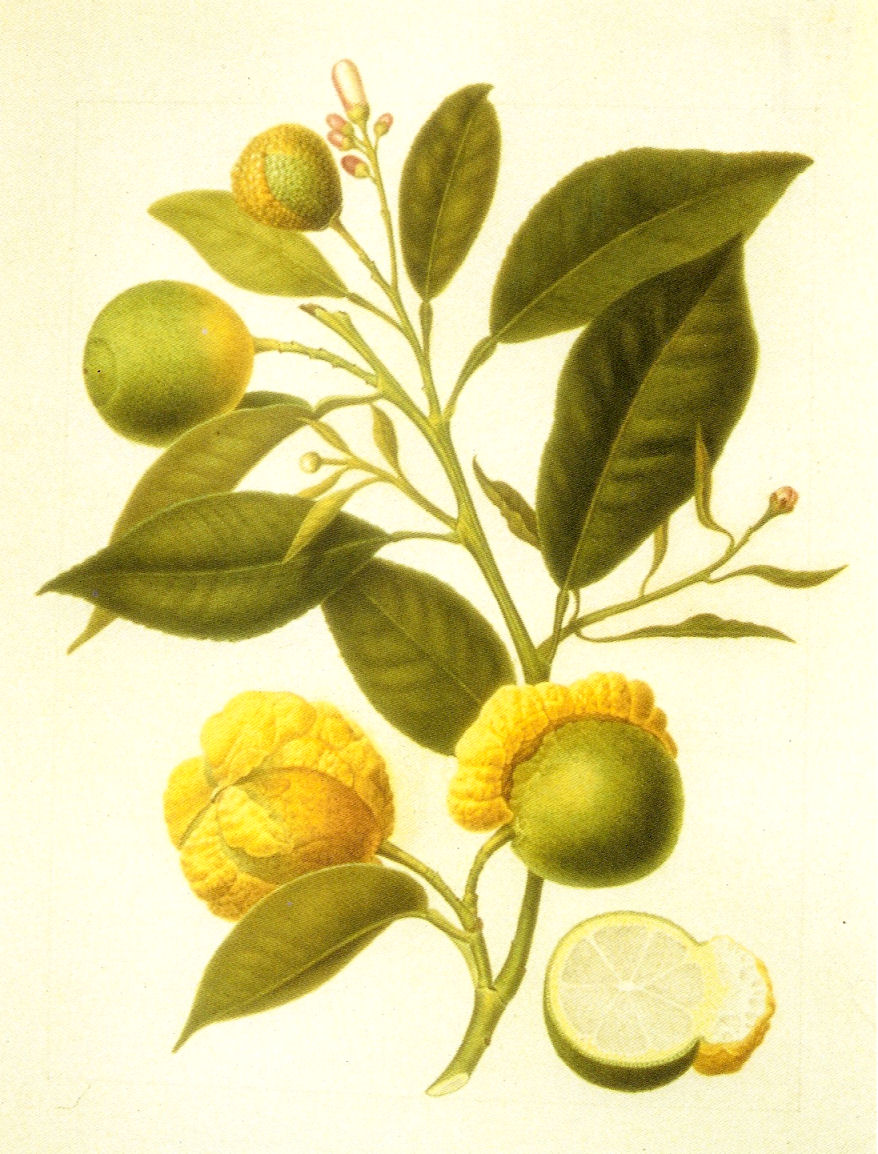
The citron originated in subtropical India and South Asia with its hot, humid summers and mild winters. Naturally unknown in Europe due to the cold winters, the Spice Route introduced citrons to the ancient Greeks and Romans. A luxury in Roman times, with cultivation limited to the warmer south of Italy, the exotic citrus is celebrated in the surviving frescos on the ruined walls of Pompeii, showing figures frolicking through orange groves. Alas, super-civilized Pompeii didn’t survive, and neither did the Roman Empire, nor its fruity supplies to Europe.
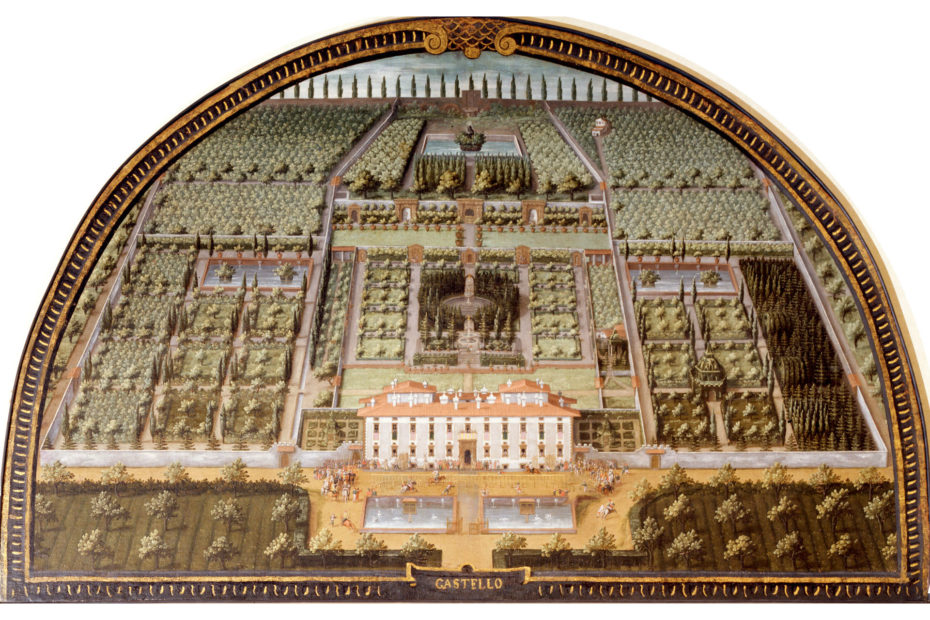
The power and wealth of the Medici family, legendary financiers of the Italian Renaissance, brought the citron and its family back to the table. The new world of Renaissance Italy saw a blossoming of the arts, from painting to sculpture to architecture. The old closed medieval world was to be abandoned for a new society of enlightenment – at least for the elite. The outward expression was that of visual control and mastery of nature, no more inward-looking squalid castles, the outdoors would be tamed. The control of the landscape through planting and intensive gardening was an essential expression of the new arts, with the citron returning as the fruit of power. Sometimes known as the bitter orange, the citron or lemon had revisited Europe in the 15th century as an expensive and exotic import from sunny climates. Medieval cookbooks describe how frugally precious orange slices were served to aristocratic guests. Citrus was desirable, rare and soon became an indispensable icon of the elite whose ability to cultivate them was no less than a divine art.
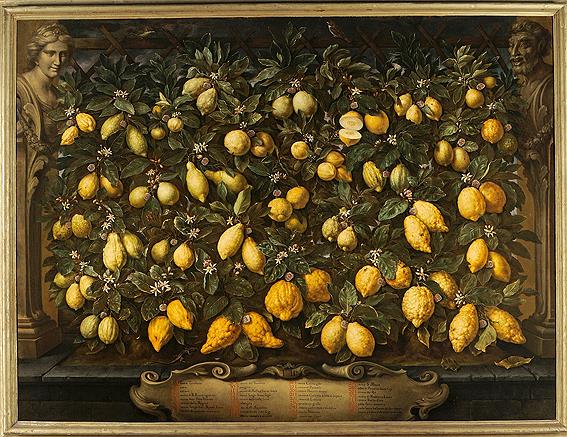
It was Cosimo de Medici who inherited the family fortune in 1537 following the battle of Montemurlo (after which he controlled Renaissance Florence and became the first Grand Duke of Tuscany). At the age of 17, Cosimo set about reconstructing the old castle at Villa di Castello just north of Florence, where he was born. He also reconstructed two other family Florentine palatial estates, Giardino dei Simplici and later in 1550 the splendid Boboli Gardens in Florence. A new garden – the likes of which had never been seen before, would be created around the new Villa di Castello, which would become the home and inspiration for some of the great Renaissance works of art, such as Botticelli’s The Birth of Venus and appropriately, his Primavera, a lavish and exotic allegorical scene set in an orange grove.
The cultivation of medicinal gardens had begun in 13th century Italy by the popes at the Vatican garden in Rome, but it would be Cosimo de Medici who would elevate the garden from an earthy plot to a high-art venue. Leone Battista Alberti, the Renaissance author and architect, had promoted the garden as an essential extension of a villa: a picnic pleasance, an entertainment zone, a sculpture park, an allegorical opera and party palace to show off not just wealth, but intellectual prowess. The garden moved from retreat to exhibition space. Nature tamed, axially arranged, adorned with gleaming statues and cascading water, lavishly planted with exotic species; the Villa di Castello garden was the prime status symbol of the day, a vast very expensive, self-indulgent and ultra-high maintenance show, and the star at the top of the A-list in a cast of thousands was none other than the noble citron.
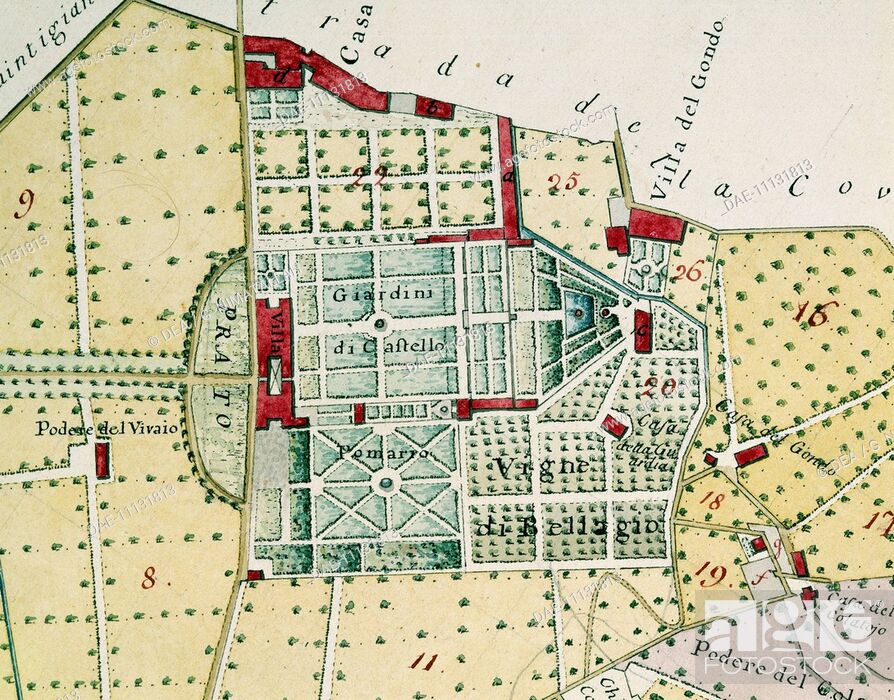
Let’s have a closer look at the spectacular garden at Villa di Castello. It was laid out on a gentle south-facing slope between the villa and the hill of Monte Morello overlooking Florence. Tribolo, the landscape architect, divided the garden area into a series of grand terraces, each planted and arranged in a distinctive style, all linked by a grand axis or avenue from the mountain to the villa. The upper terraced area was home to a grand parade of the innumerable precious and delicately potted orange and citron trees. Large wintering sheds were constructed for the seasonal protection of the divine cultivars, which required warm winter quarters. The plants were originally brought to the villa by monks, pilgrims and explorers and some by the dispersed Medici family. The great theatre continued below on the second great terrace with statues, sculptures, fountains, hedges of all shapes and sizes, grottos and mazes.
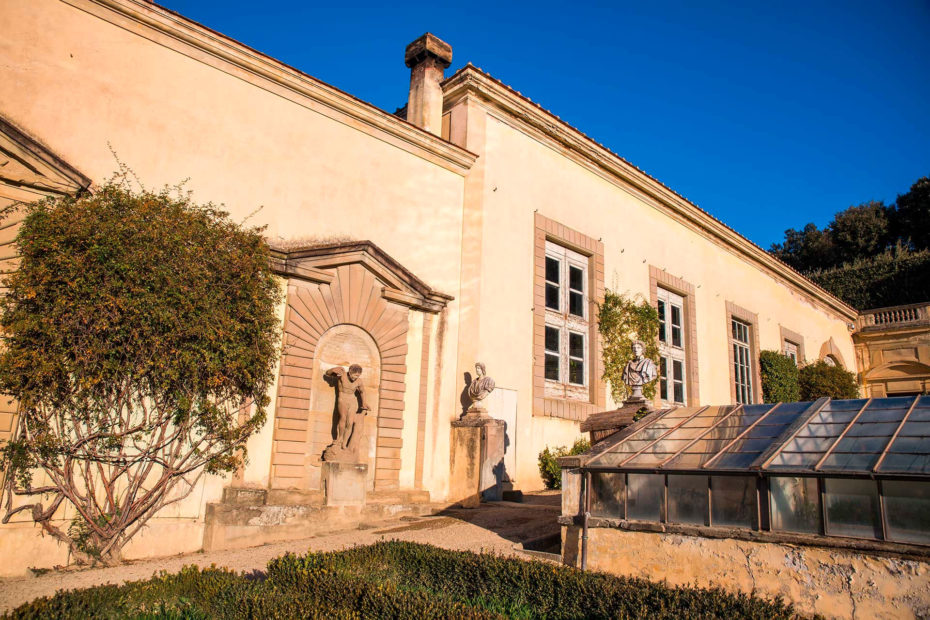
Although Cosimo had the villa rebuilt, the show was all about the garden, which became the model for all great estates across Europe in the centuries to come. The great formal French gardens such as Versailles similarly employed armies of potted citrus trees to adorn its summer lawns. When the last of the of the Medici family died in 1737, the Villa di Castello and its fantastic garden lost their prominence. The new owners, the House of Hapsburg-Lorraine, had the maze demolished and the statue of Venus was moved to the Villa La Petraia, the intensive upkeep regime was also dropped. The days of a grand show were of the past and the garden at Villa di Castello became a private retreat. Under Napoleon in the early 19th century, the villa interior was redecorated, but the garden was left sleeping.
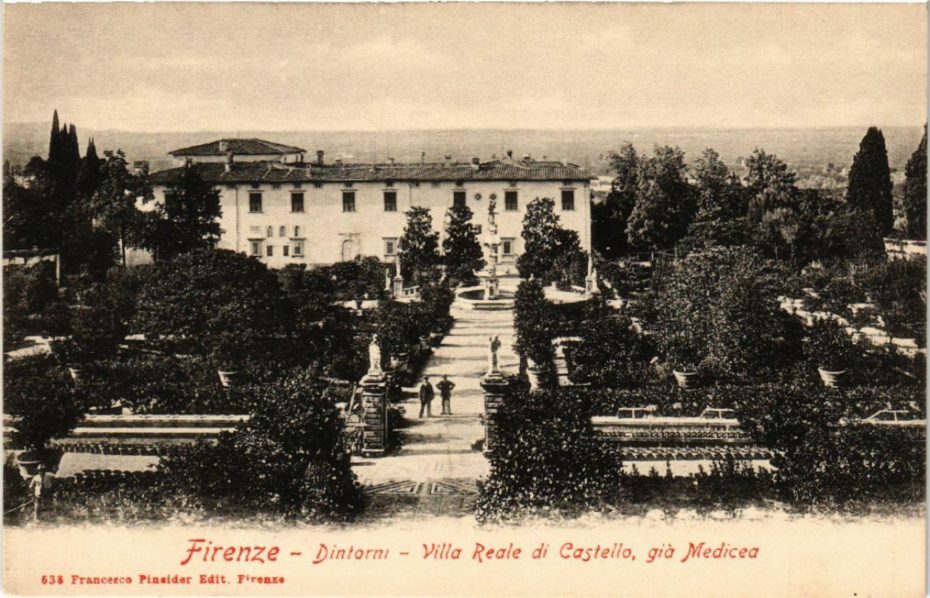
The outbreak of World War 1 in 1914 saw the garden fully abandoned. The villa was requisitioned by the Italian state as a hospital for the wounded and the old wintering sheds for the citrus were used as wards. For three winters, the old potted citrus stock was left to the ravages of the snow, frost and wind. Lemons are particularly sensitive plants – not only can they not survive frost, they need intense light all year round. Needless to say, these sensitive fruits suffered, exposed to the elements. After the war in 1919, the villa was donated to the Italian state and used as a school, dormitory and hospital. Not until 1984 did the villa become a national museum and restoration work could begin.
In the summer of 1980, a certain Paulo Galeotti, an Italian citrus expert and Director of Parks and Gardens at the Tuscany Museum, started his research into the garden and to his amazement, noticed that many of the surviving citrus bushes and trees were anything but identical. Indeed, many were producing distinctly different leaf and fruit shapes. Galeotti commented “When I was assigned to this garden in 1978, no one had the slightest idea of what those pots contained.” Galeotti then realised that the remains, or descendants of Cosimo’s fantastic citrus garden had survived. He had first noticed the aptly named Bizzarria (“bizarria” means “oddity”), the only citrus tree that produces three kind of fruits, one of which resembles a citron, another a bitter orange, and the third a fusion of both fruits, all on the same grafted plant.
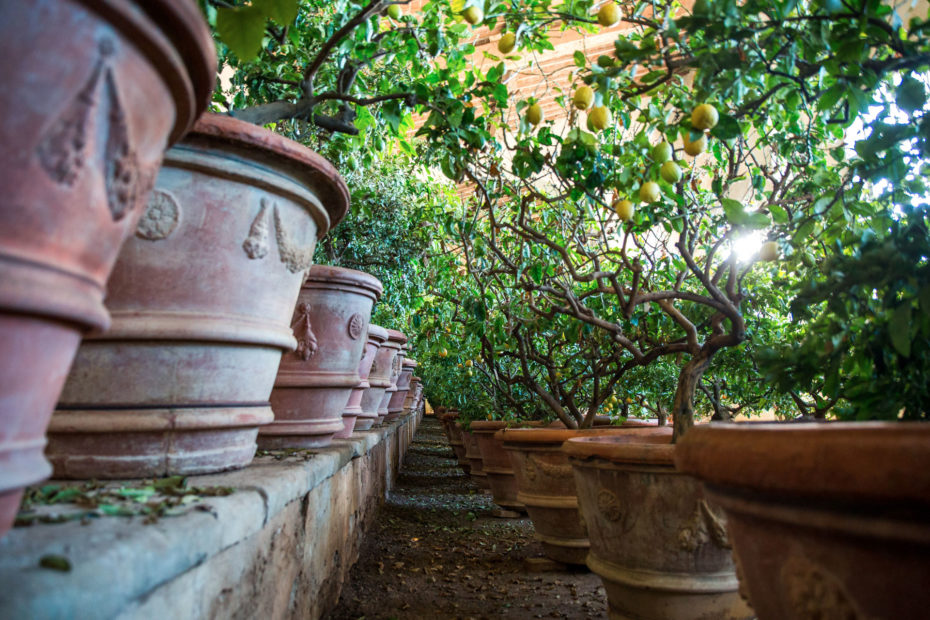
Galeotti then set about cataloguing all the types and differences, but was unable to get any first-hand background information. “No-one was able to give me a thorough answer, so I locked myself in the Italian National Archive and National Library of Florence,” he exclaimed, and “an entire world opened up to me.” Galeotti studied the catalogues and drawings of many historic gardeners, particularly Giovanni Battista Ferrari, a Jesuit monk who lived in the 16th and 17th century and the engraver Johann Christoph Volkamer, who published his works at the beginning of the 18th century.
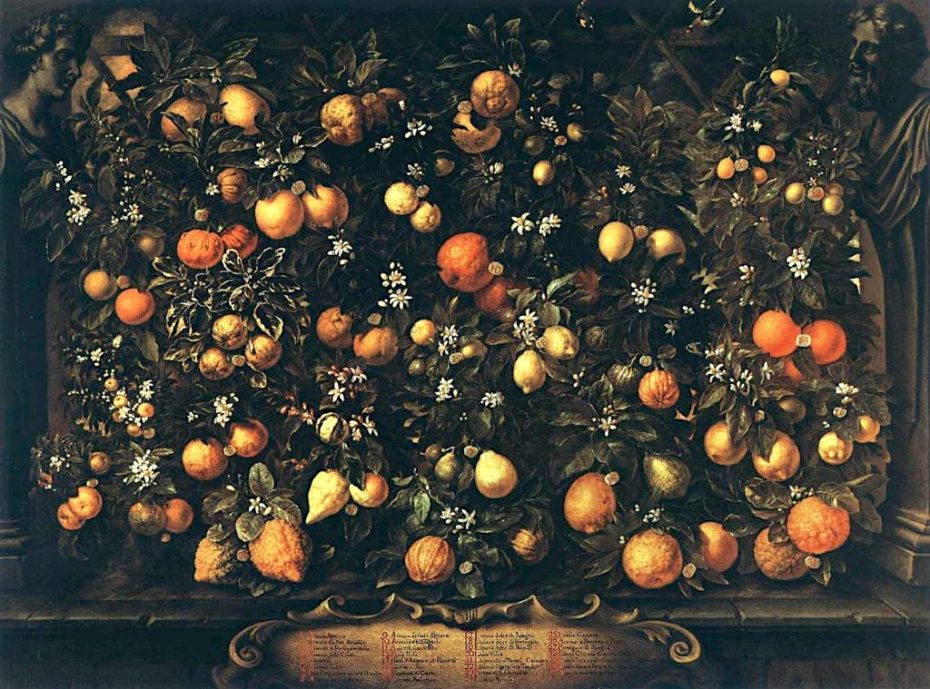
Luckily, Bartolomeo Bimbi (1684 – 1729), one of the most famous painters of still-life had been commissioned by Cosimo III (also a Grand Duke of Tuscany) to paint, record and annotate large canvases showing the fruit and flora that had been grown at the many Medici palaces. Bimbi’s work survived and illustrated 116 citruses then present in the Medici gardens. Galeotti was able to identify 80 still present in the Villa di Castello garden today.
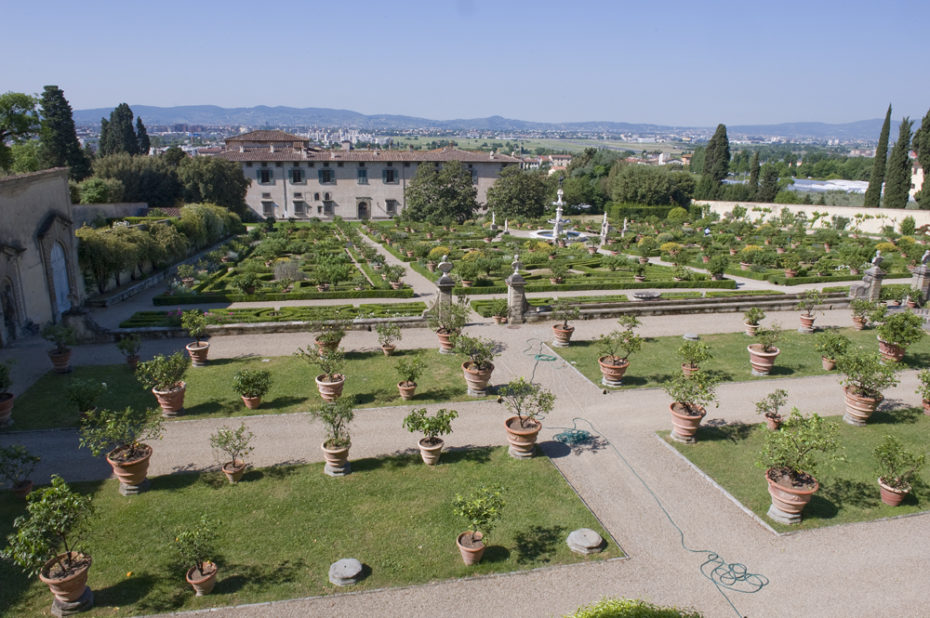
Medica Digitata was recovered, a fruit which resembles human fingers and likewise, Citrus Lunia, (known as Adams Apple), among others, in what is now the world’s biggest collection of potted citruses with over 600 species and varieties kept in the in the garden at Villa di Castello. These potted citruses also present a puzzle to botanists … it may well be the case that many of the hybrid originals had indeed died during the cold war years, and what is now present are the original rootstock regenerating through natural cross-fertilization between hybrids. The tamed nature of Cosimo’s Renaissance is fighting back!
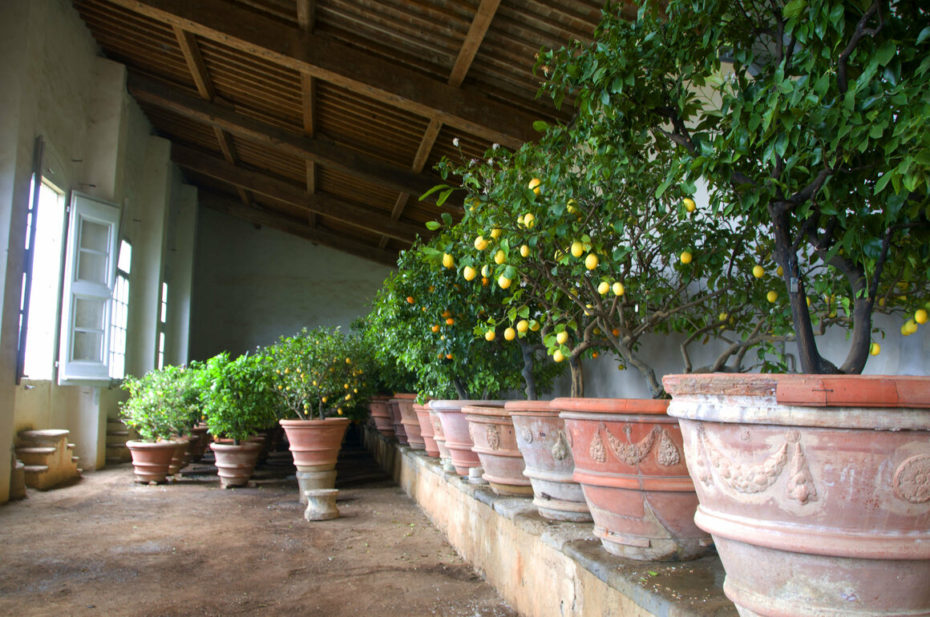
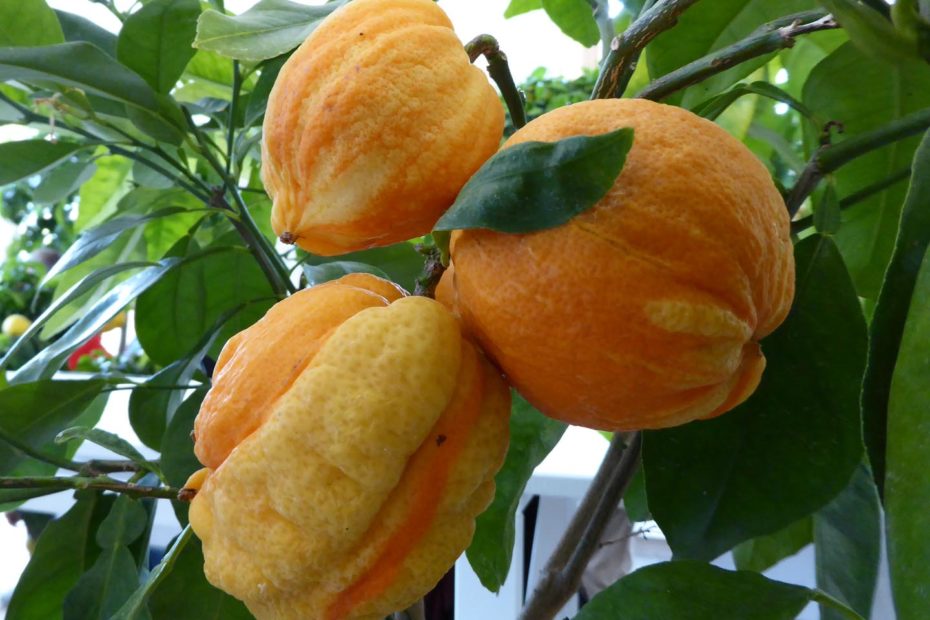
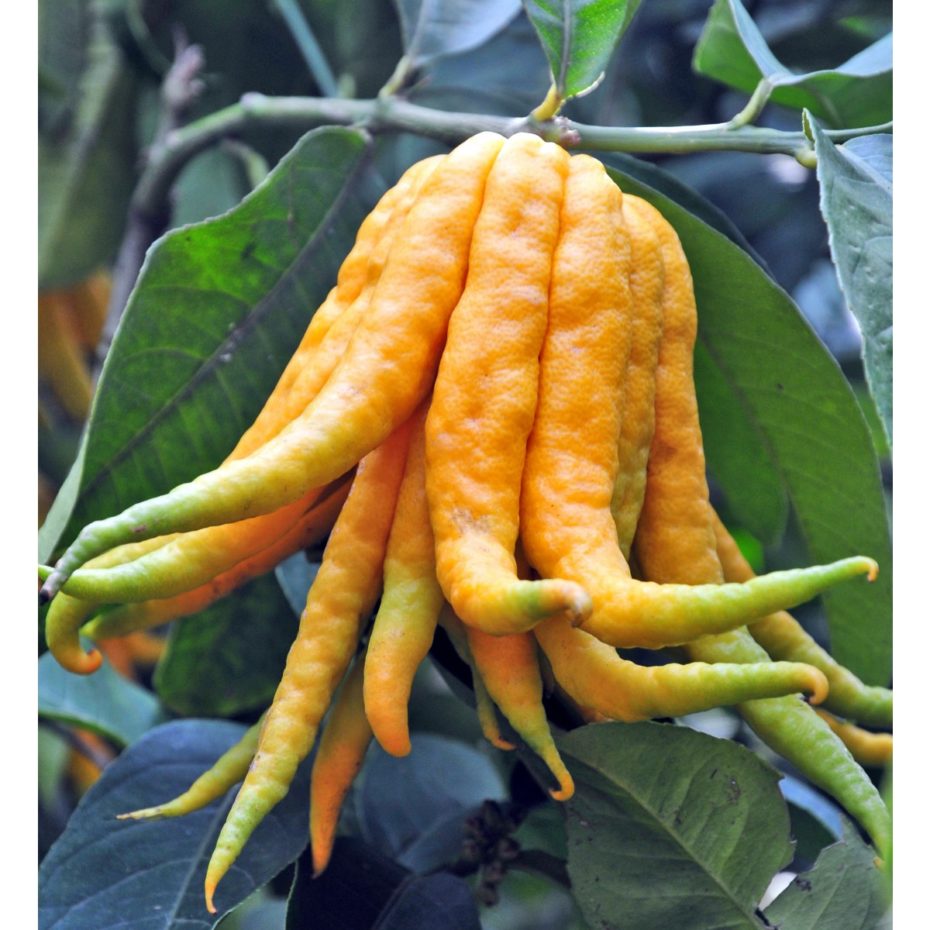
Galeotti still potters away in the ancient garden, the future of the precious pots not altogether certain. Unlike an ancient artwork protected in a museum, the delicate lemon trees need water, warmth and light. Tender year-round care is essential and shelter from the winter cold is critical in order to, year after year, keep reopening Cosimo de Medici’s grand summer ‘citronic’ show at the Villa di Castello.
Visit the Medici Villa of Castello.


